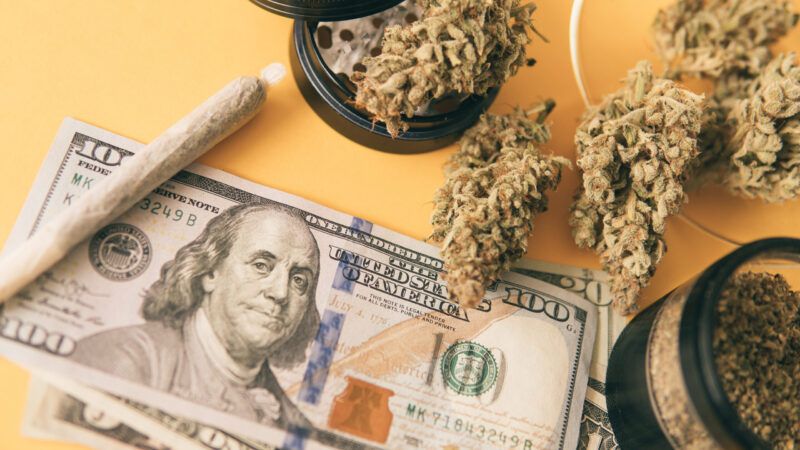It Looks Like Lots of People Used Their Federal Stimulus Payments To Buy Weed
As stimulus checks started landing in Americans' bank accounts, demand for medical marijuana went through the roof.

The passage of a $1.9 trillion federal stimulus package last month appears to have coincided with a serious outbreak of the munchies.
NuggMD, an online portal that helps people obtain state-level medical marijuana permits, reports a sharp increase in the number of people who sought appointments in March compared to February. The likely reason: those $1,400 federal stimulus payments that many Americans received in late March as part of the COVID-19 relief bill that really wasn't a COVID-19 relief bill.
Across the nine states where NuggMD operates, requests for appointments rose by 48 percent in March. Pennsylvania and Missouri, two states where medical marijuana is legal but recreational weed is still forbidden, saw month-to-month increases of over 70 percent. While traffic continues to be higher than normal, NuggMD says the biggest increase took place during the week of March 14–20—which is not-so-coincidentally the exact same period of time when "stimmies" started landing in bank accounts.
The surge of interest in medical marijuana probably has more to do with economics than with a sudden increase in health issues. Though the rules vary from state to state, medical marijuana card holders are typically allowed to purchase larger volumes at one time and are often subject to lower taxes, as NuggMD's website notes. In California, the lower taxes applied to medical marijuana mean you can save as much 10 percent versus the cost of buying for recreational use.
It's no secret that the market for marijuana has been burning up during the pandemic—legal weed sales topped $17.5 billion last year, a 48 percent increase from 2019. That's no doubt partially due to the toll that lockdowns took on many Americans, while simultaneously limiting their creative and recreational outlets. "Getting really stoned is a way of exploring your own mind when other forms of adventure are verboten," Reason's Liz Wolfe wrote this week. "People need play, and when that's been taken away from you, you must make do with the plaything of your own mind."
Suddenly having a bunch of "free" government money in bank accounts certainly helped. After the first round of stimulus checks were distributed in April 2020, recreational weed sales increased by 17 percent in California, Colorado, Nevada, and Washington, according to Marijuana Business Daily, an industry publication. Some dispensaries in Colorado reported seeing week-over-week sales doubling around the same time.
Still, the correlation between the federal stimulus payments and Americans' spending on marijuana—and liquor, for that matter—raise some interesting questions for policy makers grappling with the effectiveness of the federal government's pandemic response. Is this proof that direct stimulus payments weren't really necessary, or that they should have been limited to a smaller group of recipients who were truly needy? Yes. But does it show that the best form of stimulus is the kind that's not directed by government policy but driven by millions of individual decisions? Probably also yes.
Regardless, it's a little amusing to remember that Congress still regards marijuana as an illegal substance, even after a year when it helped more Americans afford to buy more legal weed than ever before.


Show Comments (24)